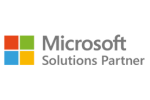Why? Because with Power BI and PostgreSQL, you can:
- turn raw data into clear, interactive reports and dashboards available 24/7 — even on your phone,
- combine it with other data sources (e.g., Excel, ERP systems, cloud services),
- automate reporting and cut analysis time from hours to minutes.
Why connect Power BI to PostgreSQL?
You already have your data in PostgreSQL and wonder what’s next? Just storing it isn’t enough. The real value begins when you can see the data, filter it, compare it, and draw actual conclusions. And that’s exactly where Power BI comes in — bright yellow and ready to help.
Connecting Power BI with PostgreSQL is more than a technical feature for the IT team. It brings real, tangible benefits for your entire organization:
-
Data visualization in just a few clicks
Instead of manually exporting tables to Excel and juggling with pivot tables, you can pull data straight from PostgreSQL into Power BI. Create charts, maps, tables, and KPIs that update automatically. Whether it’s sales, inventory levels, or campaign performance — Power BI makes it all instantly visible.
-
Automated reporting
One-time setup = no more Monday morning copy-paste marathons. Just schedule automatic data refreshes, and Power BI will pull the latest data from PostgreSQL on your terms. You’ll always have up-to-date reports at your fingertips.
-
Combine data from multiple sources
Your main data is in PostgreSQL, but some of it lives in Excel, Google Analytics, or your CRM? Power BI brings it all together into one unified data model. Compare CRM leads with PostgreSQL sales data to see what’s really driving performance.
-
Security and access control
Business data is sensitive. Power BI supports advanced roles and permissions — so you can control exactly who sees what, right down to the user, department, or even individual record level. Your PostgreSQL data stays protected and visible only to the right people.
-
Web and mobile access
Thanks to Power BI, your PostgreSQL data is always within reach — on your laptop, phone, or tablet. In meetings, on the road, or at home — no more excuses like “I don’t have access to the database.”
Business use cases
Have a PostgreSQL database and wondering if it can offer more than just rows of raw data? The answer is: absolutely. Let me show you three real-world scenarios where Power BI integrated with PostgreSQL truly supports day-to-day work — across sales, logistics, and even IT departments.
Sales reporting from ERP systems built on PostgreSQL
Imagine your ERP system stores order details, invoices, product data, and customer info — all in PostgreSQL. Until now, you’ve had to export the data, clean it up in Excel, and build reports manually. Sound familiar?
Once you connect PostgreSQL to Power BI, you build the report once — and it keeps working. You can:
- compare sales results weekly, monthly, or quarterly,
- analyze individual sales reps’ performance,
- segment customers by order value or purchase frequency.
With Power BI, ERP data becomes clear and actionable for executives, sales teams, and analysts alike. Everyone sees exactly what they need.
Inventory monitoring made simple
In many companies, inventory data also lives in PostgreSQL. But raw numbers in a table don’t tell the full story. It’s a whole different game when you see your stock levels visualized on a dashboard — showing inventory status, product turnover, and ABC indicators.
Power BI lets you create a real-time warehouse overview. You can:
- monitor minimum stock levels and get alerts about shortages,
- identify slow-moving products and plan clearance actions,
- compare stock levels across warehouses or locations.
It’s not just a time-saver. It’s the difference between making decisions based on gut feeling — or real data.
Analyzing data from web applications
Running a web app and storing user data, event logs, forms, or transactions in PostgreSQL? Great. But… what insights are you actually getting from that?
Power BI pulls this data directly from PostgreSQL and helps you understand what’s really going on:
- how many users are returning to your site,
- which features are used most often,
- where system errors are occurring.
No more guesswork. You make product decisions based on facts. That’s a competitive edge you don’t always see — but you’ll feel it fast.
Summary
If you’ve made it this far, you probably see that connecting Power BI with PostgreSQL is more than just another technical feature. It’s a real opportunity to:
- better understand your data,
- make faster, more informed decisions,
- automate repetitive processes.
By integrating Power BI and PostgreSQL, companies can build dynamic reports that don’t just look good — they actually answer critical business questions. When, where, and why something is happening — no need to guess. You’ve got the data, the dashboard, the answers.
But theory is one thing. You’ll get the real value when you try it out for yourself. Even a simple dashboard built from sales or system log data can reveal insights you’ve been missing. And once you’ve started, there’s so much more you can do — combine other data sources, automate refresh cycles, build predictive models.
Not sure where to begin? Want someone to guide you through it?
Let’s talk — no strings attached.
👉 Get in touch and see how we can help


